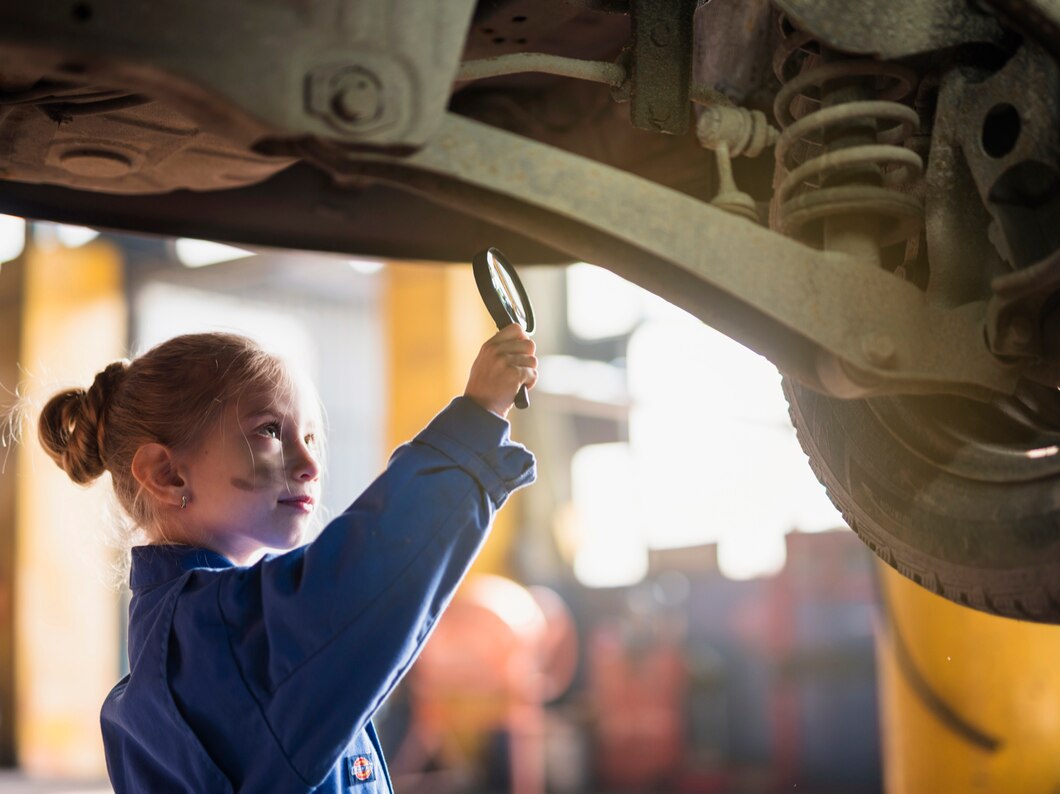Shock absorbers, or shocks, are crucial components of your car’s suspension system. They play a vital role in ensuring a smooth and controlled ride by dampening the impact of road irregularities. Over time, shock absorbers can wear out, affecting your vehicle’s performance and safety. Recognizing the early signs that your car needs new shock absorbers can help prevent further damage and ensure a comfortable driving experience. Here are the key indicators to watch for:
1. Excessive Bouncing
One of the most noticeable signs that your shock absorbers may be failing is excessive bouncing. If your car continues to bounce after hitting a bump or dip in the road, it indicates that the shocks are no longer effectively absorbing the impact.
What to Do: Perform a bounce test by pushing down firmly on the front or rear of your car. If it bounces more than 2-3 times before settling, it’s time to have the shocks inspected and possibly replaced.
2. Nose Diving and Rear Squatting
When your shock absorbers are worn out, you might notice the front of your car dipping excessively during hard braking (nose diving) or the rear squatting excessively when accelerating.
What to Do: If you observe these behaviors, it’s a clear sign that your shocks need attention. Have a mechanic inspect and replace them as needed.
3. Uneven Tire Wear
Shock absorbers help maintain consistent tire contact with the road. Worn shocks can cause your tires to wear unevenly, resulting in bald spots or cupping.
What to Do: Regularly check your tires for uneven wear patterns. If you notice unusual wear, have your suspension system, including the shocks, inspected.
4. Poor Handling and Stability
A vehicle with worn shock absorbers will often feel less stable, particularly when turning or driving on rough surfaces. You may experience excessive body roll during turns or feel that the car is swaying more than usual.
What to Do: Pay attention to how your car handles. If you notice a decline in stability or control, have your shocks evaluated by a professional.
5. Longer Braking Distances
Effective shock absorbers help maintain proper tire traction during braking. Worn shocks can increase your stopping distance, making it harder to bring your car to a halt.
What to Do: Be mindful of changes in your car’s braking performance. If it takes longer to stop, consider having your shocks and brakes checked.
6. Leaking Fluid
Shock absorbers contain hydraulic fluid that can leak when they are damaged or worn out. Visible oil on the outside of the shocks is a clear indication of a problem.
What to Do: Inspect your shock absorbers for any signs of fluid leakage. If you find any, have them replaced as soon as possible.
7. Unusual Noises
Faulty shock absorbers can produce unusual noises such as clunking, banging, or rattling, especially when driving over bumps or rough roads.
What to Do: Listen for any unfamiliar sounds while driving. If you hear noises coming from the suspension, have your shocks inspected by a mechanic.
Preventive Maintenance and Tips
- Regular Inspections: Include shock absorber checks in your routine vehicle maintenance. Inspect them every 20,000 to 30,000 miles or as recommended by your vehicle’s manufacturer.
- Observe Driving Conditions: Be mindful of driving on rough roads or carrying heavy loads, as these can accelerate wear on your shocks.
- Professional Evaluation: Have a professional mechanic inspect your suspension system regularly, especially if you notice any of the early warning signs.
- Replace in Pairs: When replacing shock absorbers, always replace them in pairs (both front or both rear) to maintain balanced handling and performance.
Recognizing the early signs that your car needs new shock absorbers is essential for maintaining a smooth, safe, and controlled driving experience. Excessive bouncing, nose diving, uneven tire wear, poor handling, longer braking distances, leaking fluid, and unusual noises are all indicators that your shocks may need to be replaced. Regular inspections and prompt attention to these signs can help you avoid further damage and ensure your vehicle remains in top condition. By staying proactive, you can enjoy a comfortable and secure ride while extending the life of your car’s suspension system.











